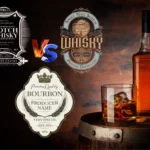We are going to cover the query “how long is whisky aged”. We’ll also take a look at the aging process and its impact on whisky’s taste.
How old is that container of bourbon you recently purchased? Here is the importance of bourbon age and comprehending the name age articulation.
Assuming there’s been one focal subject to each significant bourbon story of the last ten years, it has been age: The intriguing Pappy Van Winkle, age 23, so desired that a genuine heist happen, the ludicrously old 72-year-old Macallan was discharged, and daintily extended whiskey producers dropped numbers from their containers so they could utilize more youthful bourbons to satisfy the need.
The age explanation of bourbon is, in mainstream society, a straightforward quality marker with a considerably less difficult guideline: More seasoned is, by and large, better.
However, the standard — and the age explanation overall — are both horrendously summed up, improved on approaches to illuminating the normal consumer rapidly of what the person is purchasing.
Truly, age explanations aren’t as basic as they appear; most bourbon consumers could not completely figure out what that number method is, and stressing a lot over numbers makes you prone to missing a few unimaginable jugs.
The intricacy will increment with how much time it spends in the barrel. For you to get the ideal jug of whisky, it is basic to fathom how long a whisky will progress in years.
Whisky Ages Like Wine
Many know nothing about how comparative whisky tastes to wine, regardless of not being produced from grapes. It is made by refining matured grains, which are then matured in oak barrels.
For instance, the Chivas 25-Year-Old Scotch Whisky has an age explanation on its name along these lines.
By and by, the truth of whisky maturing is more nuanced than that. The strategy is affected by the sort of wood utilized, the climate it matured in, and other components.
Whisky is many times kept in wood barrels that have been scorched or hot before being loaded up with the cocktail. By this cycle, the liquor can relax and take major areas of strength out.
In any case, distillers have begun exploring different avenues regarding new methodologies to, as of late, hurry the maturing system. For instance, they substitute Japanese Mizunara oak for normal European oak. This might speed up the development interaction and give the whisky a more extraordinary taste.
Every assortment of whisky is developed for an alternate measure of time, but it is frequently encouraged to consume whisky that is no less than 10 years of age. This is because of the way that it will have accomplished the best harmony between the impacts of the wood and the liquor.
A barrel might start to deliver its desire for as short as five years in hotter regions; however, it can require as long as 30 years in colder ones. This is because oak develops more quickly in warm environments than cool ones.
The best whiskies, in any case, have matured for a significant stretch. The whiskies that have been developed for over a century are the most exorbitant and pursued, while others are a lot more seasoned.
The actual barrel, notwithstanding the sort of wood utilized, will altogether influence the flavor of the bourbon.
What Is Maturing?
Something that makes bourbon legitimately talk is contact with wood. Contact with wood is not entirely settled, so a glimmer “matured” bourbon that was in touch with wood for a couple of moments qualifies as bourbon in the U.S., yet not straight bourbon.
Also, different styles of bourbon, like whiskey, Irish, Scotch, Canadian, and Japanese, all have their guidelines.
For example, whiskey should be matured in new, roasted oak barrels. Straight whiskey should do as such for at least two years. In Scotland, it can’t be named “whisky” until it has matured for quite some time and a day.
Yet, paying little heed to numbers, the barrel is huge because it’s not unexpectedly the No. 1 wellspring of flavor for a bourbon when packaged.
Bourbon infiltrates the wood filaments, separates, intensifies like wood sugars, and hauls them free and clear into the bourbon.
The temperature significantly impacts this: When wood gets warm, it extends, giving more fluid access. At the point when it gets cold, it contracts, pushing bourbon (and variety, sugars, and different flavors) once again into the fluid. It’s similar to soaking tea.
The wood’s minuscule pores will allow oxygen to go through, which will invigorate compound cycles and give the wood a more profound taste.
During this time, the lignin and lactones in the wood deteriorate, delivering notes of vanillin and coconut. These qualities, which are reminiscent of sherry and different sorts of wine, add to the general kind of whisky.
Besides, the wood goes about as a characteristic additive, hindering the development of destructive microscopic organisms and different toxins in the distillate. The whisky will be less risky to ingest as a result, and it might endure longer.
However, it’s memorable essential that a bourbon’s volume will diminish as it ages, so remember that. This is because the grating particles produced during barrel maturing could likely vanish, leaving a more slender covering in their stead.
Also, learn
- Best Reasonable/Cheap Whiskies to Drink in 2023 (Top Picks)
- Cognac vs Whisky: Which is Great For Wellbeing?
- Whisky: Benefits, Side Effects and More
- Whiskey Vs Bourbon Vs Scotch
- The Difference Between Rum and Whisky Explained
- Difference Between Whisky and Cognac
- Whiskey Vs Beer Calories – Which One is Better and Preferable?







